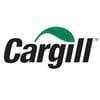INTRODUCTION
The United States is the largest producer of beef in the world, with over 11 million head of beef cattle in feedlots at any given time (as of May 2020; USDA, 2020). Corn is one of the most important ingredients in feedlot cattle diets because it is in expensive and energy dense. Mechanical processing of corn has been used in the feedlot industry for decades to increase starch digestibility, and, conse quently, improve growth performance and carcass characteristics of beef cattle. Research in starch utilization by ruminants has been extensively re viewed (Huntington, 1997; Owens et al., 1997; Huntington et al., 2006). Corn processing tends to change the digestion site in ruminants in such a way that ground corn is mostly fermented in the rumen with very little starch passing to the small intestine, while whole-shelled corn (WSC) has much more starch that reaches the small intestine (Owens et al., 1986). Freitas et al. (2020) concluded that cracking corn lowered dry matter intake (DMI) and im proved gain to feed ratio (G:F) when compared with cattle fed WSC. On the other hand, Gorocica Buenfil and Loerch (2005) did not find any differ ences in DMI, average daily gain (ADG) or G:F when cattle fed dry-rolled corn (DRC) were com pared with cattle fed WSC. Research data have also shown that site of starch digestion affects glucose and energy metabolism (Huntington et al., 2006; Reynolds, 2006; Owens et al., 2016). McLeod et al. (2001) demonstrated that there is an energetic ad vantage when starch is digested and absorbed in the small intestine instead of fermented in the rumen. This greater energy availability has been associated with increased marbling scores (Vander Pol et al., 2008; Zhang et al., 2015). However, when cattle fed DRC were compared with cattle fed WSC, Freitas et al. (2020) showed no differences in marbling. Even though results appear to be conflicting, there are many factors that might be affecting outcomes and causing differences in performance and carcass characteristics when comparing corn processing in cattle research. Part of these differences can be due to management practices in each study, such as backgrounding (time and diet), cattle age, feed bunk management, use of implants, time on feed, and others (Van Koevering et al., 1995; Gorocica Buenfil and Loerch, 2005; Relling et al., 2020). Therefore, because of lack of a standard manage ment practice throughout cattle studies, conflicting reports have been published on the benefits of pro cessing corn, sometimes suggesting that the additional cost of grinding corn may not be justified.
Our hypothesis is that cattle fed cracked corn would have greater ADG and improved G:F when com pared with cattle fed WSC in their diets. Also, that cattle fed WSC would have greater marbling due to an increase of starch reaching the small intestine. The objectives of this paper were to evaluate the ef fects of corn processing during the finishing phase on feedlot cattle growth performance and carcass characteristics.
MATERIALS AND METHODS
All animal procedures were approved by the Ohio State University Institute of Animal Care and Use Committee (no. 2016A00000002) and fol lowed the guidelines recommended in the Guide for the Care and Use of Agricultural Animals in Agricultural Research and Teaching (FASS, 2010).
Animals, Experimental Design, and Treatments
Ninety-five backgrounded Angus-cross cattle, with initial body weight (BW) 263.04 ± 9.8 kg, were used in a randomized complete block design in a feedlot setting and were divided in three blocks: heifers (n = 31, 4 pens, initial BW = 267.1 ± 1.3 kg), light steers (n = 32, 4 pens, initial BW = 252.6 ± 1.3 kg), and heavy steers (n = 32, 4 pens, ini tial BW = 279 ± 1.4 kg), at the Eastern Research Experimental Station, in Caldwell, OH. Cattle within each block were randomly allotted in pens. Each pen (7.3 × 37.2 m) included an area covered by a metal roof (7.3 × 8.5 m) and an outside loafing area (7.3 ×x 28.6 m). The flooring material under the covered space was composed of crushed, com pacted limestone (screenings), and the outside loafing area was concrete. Each pen contain a feed bunk of 6-m long. Pens (six pens per treatment with eight animals per pen) within each block were then randomly assigned and equally distributed to one of the following treatments: (1) cattle-fed DRC based diets or (2) cattle-fed WSC-based diets. Diets contained 70% of the experimental treatment corn on a dry matter (DM) basis. The same lot of corn (yellow dent corn no. 2) was used for the WSC and DRC diets. To crack the corn, a dual pair roller (Roskamp Champion, Watterloo, IA) was used, with an average particle size of 0.7 mm. Particle size was measured using the method described by Callison et al. (2001).The remainder of the diets contained 15% dried distiller’s grains with solubles, 7% grass hay, and 8% vitamin/mineral supplement (DM basis; Table 1). The experimental diets met the nutrient requirement for finishing cattle (NRC, 2000) to support 1.6 kg/d. Both diets had the same composition, and the corn processing was the only difference.
Table 1. Composition of dietary treatments and nutrient composition of finishing diets containing DRC or WSC, on a DM basis
a DDGS = dried distillers grains plus solubles.
b Bermuda grass hay composition (DM basis): CP = 10.15%; Acid Detergent Insoluble Crude Protein (ADICP) = 0.82%; NDF with no ash (aNDF) = 59.56%; ADF = 43.54%; Ca = 0.36%; P = 0.23%; EE = 2.08%; Ash = 6.86%; Lignin = 8.65%.
c Ingredients in the supplement represent 100 % of the supplement. Vitamin A-30 as beta-carotene (30,000 IU/g); Vitamin D-3 as chole calciferol (3,000 IU/g). Vitamin E as d-alpha-tocopheryl acetate (44 IU/g). Rumensin 90 (200 g/kg; Elanco Animal Health, Greenfield, IN).
d Nutrient analysis performed on all ingredients.
From weaning (when animals were 6.4 ± 0.90 mo old) until the experiment started (approximately 5 mo later), cattle were backgrounded in a fes cue-based pasture. Three mo before trial initiation, cattle were offered ad libitum hay and a grain mix containing 60% cracked corn, 10% soybean meal, 28% soybean hulls, and 2% animal-vegetable blend fat. The amount of grain mix increased monthly such that when the experiment started, cattle were consuming 3 kg of grain mix per head, daily (DM basis). Cattle were not implanted during the whole experiment.
The transition from the backgrounding pro gram started upon feedlot entry and was considered d1 of the experiment. The transition of the diet was managed as a step-up increase in the concen trate:forage ratio as described previously (Freitas et al., 2020). During the transition, DMI was fixed at 6.25 kg. After the diet transition period, offered feed was gradually increased. Bunks were observed daily, and feed offered was increased 5% (DM basis) if bunks were clean 2 d in a row. One heifer fed the WSC diet that did not adapt to the feeding system, and it was removed from the experiment during the adaptation period.
Sampling, Carcass Characteristics, and Analysis
Feed samples were dried to 100°C weekly, and DM from samples were used to adjust feed delivery (on a dry matter basis) and allow determination of DMI. Composite feed samples were taken every week, dried in a forced-air oven at 56°C and stored for future analysis.
Composited feed samples were analyzed for DM (100°C for 24 h), acid detergent fiber and neu tral detergent fiber (Ankom Technology method 5 and 6, respectively; Ankom Technology, 2014), N (to calculate crude protein; method 990.03; AOAC, 2000), ether extractable lipid (AOCS, 2005), and total ash (600°C for 12 h).
Cattle were individually weighed on d0, d14, d28, d56, and then every 28 d during the trial until the last day of the trial (d217, d224, and d232 ± d4 for the heifers, heavy steers, and light steers, re spectively). Cattle were approximately 18–19 mo of age at slaughter day. Weight was measured 1 h be fore the normal feeding time, and cattle were not withheld from feed or water. Cattle within a block were slaughtered when mean backfat of all cattle in the block was estimated (visual appraisal; Phillips et al., 2002; Felix and Loerch, 2011) to be 1.2 cm. Because of packer capacity, it took a total of 4 d to ship each block of cattle. To account for differences that may occur, similar number of animals for each pen within each block were sent to slaughter at the same time such that both dietary treatments were represented in each off-test day.
Hot carcass weight (HCW) was recorded on the day of slaughter and dressing percentage (DP) was calculated using the off-test weight of the cattle. Carcasses were chilled for 48 h at –4°C and ribbed between the 12th and 13th ribs and subcutaneous backfat thickness at the 12th rib (BF), Longissimus dorsi muscle area (LMA), marbling score, kidney, pelvic and heart fat (KPH), and USDA Quality Grade (USDA, 1997) were collected by a certified USDA grader.
Statistical Analysis
The experimental design was a randomized complete block design. Cattle growth performance and carcass characteristics were analyzed using the MIXED procedure of SAS (SAS Inst. Inc., Cary, NC). The model for cattle growth perform ance, HCW, DP, BF, LMA, and KPH included the fixed effect of treatment. Block and pen within block were included in the model as random effects. Pen was considered the experimental unit. Data for USDA Yield and Quality Grade distributions were compared using the GLIMMIX procedure of SAS including the fixed effect of treatment and the random effect of block and pen within block. Data are presented as LSMeans and standard errors of the mean (SEM). Differences were declared signifi cant at P ≤ 0.05. Trends, where discussed, were de clared at P ≤ 0.10.
RESULTS AND DISCUSSION
Growth Performance
Cattle fed DRC had greater ADG (P = 0.02; Table 2) and heavier final BW (P < 0.01) at the end of trial when compared with cattle fed WSC. Even though ADG was greater for cattle fed DRC, feed efficiency was similar (P = 0.45) be cause cattle fed DRC also consumed more DM (P = 0.04) when compared with cattle fed WSC. We had hypothesized the greater ADG for cattle fed DRC. For more than four decades, research data has shown that corn processing increases starch digestibility (Galyean et al., 1979) and feedlot growth performance (Cole et al., 1976; Zinn et al., 2002; Corona et al., 2005). According to Zinn et al. (2011) and Owens and Basalan (2013), corn processing has been reported to in crease growth rate when compared with feeding WSC because it increases the net energy content of the diet.
Table 2. BW, ADG, DMI, and G:F ratio of beef steers fed DRC or WSC in their diets during the finishing phase in a feedlota
a Backgrounded cattle were divided in three blocks of heifers (n = 32, four pens), light steers (n = 32, four pens), and heavy steers (n = 32, four pens). Diets contained 70% of corn (experimental treatment), 15% dried distillers grains with solubles, 7% grass hay, and 8% supplement on a dry matter basis. Cattle were fed for 217, 223, and 223 ± 2 d for the heifers, light steers, and heavy steers blocks, respectively.
However, these results differ from Freitas et al. (2020), where researchers reported similar ADG and final BW but lower DMI and greater G:F for cattle fed DRC when compared with cattle fed WSC during the finishing phase in a feedlot. Results from the current study also differ from study conducted by Gorocica-Buenfil and Loerch (2005), which did not report any differ ences in DMI or ADG when cattle were fed DRC or WSC in the feedlot. Also, Owens et al. (1997), in an extensive literature review, stated that G:F was not always improved by grinding or rolling corn for cattle. These contradictory results can be influenced by numerous factors such as dif ferences in cattle age and roughage source and level (Gorocica-Buenfil and Loerch, 2005; Owens, 2005), differences in the backgrounding phase (Lancaster et al., 2014; Cox-O’Neill et al., 2017) among experiments, and others. A WSC-based diet has more effective NDF (roughage character istics) than a DRC-based diet, thus a WSC-based diet may need less NDF from roughage to be added to it, compared with diets that contain less f ibrous grains or when grain is processed exten sively (Owens, 2005), which may lead to greater energy levels in the diet.
An important difference between Freitas et al. (2020) and the current experiment was the processing of corn fed to cattle before the feedlot phase, during the backgrounding phase. In Freitas et al. (2020), backgrounding was done with WSC, and the current experiment fed DRC during the backgrounding phase. Another differ ence from this and previous experiment (Freitas et al., 2020) was the BF at the end of experiment, despite that management, diet, and days on feed were similar. Gorocica-Buenfil and Loerch (2005) showed interaction between days on feed and the corn processing method for growth rate and feed efficiency, which may explain part of the con flicting responses to grain processing previously reported in the literature. Also, Coleman et al. (1995) showed that the energy source in the diet during the backgrounding phase of steers affects subsequent finishing performance and carcass characteristics. Even though most of the energy content in Freitas et al. (2020) and Gorocica Buenfil and Loerch (2005) comes from corn, we assumed that different processing methods during the backgrounding phase may have affected diges tion and energy utilization by the animals; there fore, leading to performance differences during the finishing phase. In a meta-analysis, Lancaster et al. (2014) concluded that various nutritional and management strategies applied during the backgrounding phase may affect performance and carcass characteristics on the subsequent finishing phase. Similarly, Cox-O’Neill et al. (2017) showed that growth rate, diet, and man agement during the backgrounding phase affect performance growth during the finishing phase and carcass characteristics. Less ADG during the growing phase has been associated with increased ADG (Lancaster et al., 2014) and G:F (Reuter and Beck, 2013; Lancaster et al., 2014) during the finishing phase. Because we do not have enough information about the backgrounding phase of all prior experiments, we cannot do a direct com parison of them.
Carcass Characteristics
There was effect of corn processing on HCW (P < 0.01; Table 3), DP (P < 0.01), and LMA (P < 0.01). The increased ADG and final BW for cattle fed DRC likely drove the greater HCW, DP and LMA in these cattle when compared with those fed WSC. Zinn et al. (2011) compared finely rolling, coarsely rolling, and grinding dry corn and showed that total tract starch digestion was similar for both dry processed corns. However, in studies directly comparing dry rolled vs. whole shelled corn, dry rolling increased (2% to 12%) total tract starch digestion. Thus, the greater ruminal starch digestion (Owens et al., 1986) and greater total tract digestibility (Owens, 2005; Zinn et al., 2011) promoted by dry rolling corn when compared with WSC are probably reasons of the greater ADG (Corona et al, 2005; Zinn et al., 2011) and the con sequent differences in carcass characteristics, such as the greater response for HCW, DP, and LMA when cattle were fed DRC compared with WSC. Corona et al. (2005) compared effects of whole, ground, dry-rolled, and steam-flaked corn on di gestion and growth performance in feedlot cattle and showed lower DP for the WSC-based diet. In agreement, Freitas et al. (2020) showed that LMA
Table 3. Carcass characteristics of backgrounded beef cattle fed DRC or WSC in their diets during the finishing phase in a feedlota
a Backgrounded cattle were divided in 3 blocks of heifers (n = 31, four pens), light steers (n = 32, four pens), and heavy steers (n = 32, four pens). Diets contained 70% of corn (experimental treatment), 15% dried distillers grains with solubles, 7% grass hay, and 8% supplement on a dry matter basis. Cattle were fed for 217, 223, and 223 ± 2 d for the heifers, light steers, and heavy steers blocks, respectively.
b HCW, hot carcass weight; KPH, kidney, pelvic, and heart fat; LM, Longissimus dorsi muscle; IM fat, ether-extractable intramuscular fat.
c Dressing percentage was calculated by dividing hot carcass weight by final body weight.
d For marbling score: 600 to 699 = modest; 700 to 799 = moderate.
e Carcass Yield Grade was calculated (USDA, 1997): YG = 2.50 + 6.35 × fat thickness (cm) – 2.06 × LM area (cm2) + 0.2 × KPH (%) + 0.0017 × HCW (kg). YG 1–3 represent cattle graded 1 to 3; YG4 represent cattle graded 4. No cattle grade 5.
tended to be greater in cattle fed DRC compared with WSC; however, they did not find any effect of corn processing on HCW or DP in the same cattle. Other research data, however, have shown no dif ference in LMA when compared DRC with WSC based diets fed to cattle (Gorocica-Buenfil and Loerch, 2005; Relling et al., 2020).
We hypothesized that feeding WSC to feedlot cattle would increase marbling in the carcass be cause more starch would bypass the rumen and, thus, more glucose would be available on cattle fed WSC compared with cattle fed DRC. Smith and Crouse (1984) studied contributions of acetate, lactate, and glucose to lipogenesis in bovine intra muscular adipose tissue and showed that glucose was quantitatively the primary lipid precursor in intramuscular adipose tissue, contributing with 51% to 76% of acetyl units to fatty acid synthesis, while acetate’s contribution to lipogenesis in intra muscular adipose tissue was substantially less (10% to 26%). In the same study, acetate provided 70% to 80% of the acetyl units to fatty acid synthesis in subcutaneous adipose tissue, while lactate con tributed the same percentage acetyl units in both adipose tissue depots. However, there was no effect of treatment for BF, KPH, marbling score, USDA Quality, or Yield Grades (P ≥ 0.18), giving no sup port for our hypothesis. Gorocica-Buenfil and Loerch (2005) reported that cattle fed processed grains increased marbling score, but these effects on marbling score did not result in overall changes in USDA Quality Grade nor Yield Grade. On the other hand, Freitas et al. (2020) did not find differ ences in marbling score when cattle fed DRC was compared with cattle fed WSC.
There are various factors that may affect car cass characteristics in feedlot cattle besides the corn process method, which makes it hard to compare data between trials in case those specific criteria were not taken into consideration. Thus, differ ences in starch digestibility, diet composition, cattle age, management, DMI level, use of implants, site of starch digestion, and degree of fattening at slaughter time could lead to carcass characteristics differences.
Zinn et al. (2011) found only a slight reduction in net energy for maintenance (NEm) of 3.2% in WSC when compared with DRC, and they mentioned that it was consistent with expected values based on the National Research Council (NRC, 2000), which does not differentiate the NE value of corn for whole versus dry processes. Even though the NE of the WSC and DRC are similar, it is to be expected that enhancements in rumen starch digestion due to dry rolling will be more noticeable in yearlings and older cattle than in weanling animals, because chewing capacity appears to be greater for weanlings than yearlings (Nicholson et al., 1971; Morgan and Campling, 1978). The extensive chewing by younger cattle tend to break down the pericarp of the grain and expose the starchy endosperm more efficiently, thus permitting moisture, microbes, and enzymes to enter for fermentation.
Another component that might help explain differences in carcass characteristics in cattle be tween trials is based on the DMI. According to Corona et al. (2005), limit fed cattle usually con sume their diets faster, reducing chewing, which creates a bigger corn particle size reaching rumen and intestines when compared with cattle fed for ad libitum intake. While limit feeding, these authors showed a reduction in total tract starch apparent digestibility in cattle fed WSC when compared with cattle fed DRC; and they acknowledged that limit feeding might have been the reason for the different results. Therefore, some conflicting responses noted in carcass characteristics may be due to differences in research trials rather than simply due to differ ences in corn processing during the finishing phase and thereby must be viewed with caution.
In conclusion, cattle fed DRC had greater DMI and greater ADG, leading to greater final BW, when compared with cattle fed WSC. However, feed efficiency was similar between treatments. Cattle fed DRC had heavier HCW, greater DP, and greater LMA when compared with cattle fed WSC. Because of large amount of variables affecting re search trials that test corn processing and its effects on growth performance and carcass characteristics, more research is needed to evaluate the interaction effect of corn processing and other management variables, such as backgrounding, use of implants.
This article was originally published in Translational Animal Science 2021.5:1-8 doi: 10.1093/tas/txaa228. This is an Open Access article distributed under the terms of the Creative Commons Attribution NonCommercial License (http://creativecommons.org/licenses/by-nc/4.0/). 












